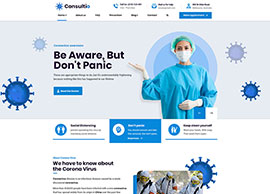Thalassemia
- Thalassemia is an inherited blood disorder in which the body makes an abnormal form of haemoglobin
- The disorder results in excessive destruction of red blood cells, which leads to anaemia
- Three main forms of thalassemia are alpha thalassemia, beta thalassemia, and thalassemia minor
- According to the Centres for Disease Control and Prevention (CDC), thalassemia is most common in people from Asia, the Middle East, Africa, and Mediterranean countries such as Greece and Turkey

- Thalassemia is inherited, meaning that at least one of the parents must be a carrier of the disease. It’s caused by either a genetic mutation or a deletion of certain key gene fragments.
- In alpha thalassemia, at least one of the alpha globin genes has a mutation or abnormality.
- In beta thalassemia, the beta globin genes are affected.
- If only one of the parents is a carrier for thalassemia, person may develop a form of the disease known as thalassemia minor. If this occurs, the person probably won’t have symptoms, but will be a carrier of the disease.
- Bone deformities, especially in the face.
- Dark urine.
- Delayed growth and development.
- Excessive tiredness and fatigue.
- yellow or pale skin.
- Fussiness.
- Frequent infections
- A poor appetite and failure to thrive.
- Jaundice.
- Enlarged organs especially enlarged spleen.
- Malnourishment.
- A low-fat, plant-based diet is the best choice
- Limit iron-rich foods.
- Moderate-intensity workouts are recommended.
Thalassemia is a genetic disorder where there is excessive self destruction of red blood cells and abnormal manufacturing of the haemoglobin by the body itself. The treatment and prognosis depends on the type of Thalassemia. Alpha and Beta Thalassemia are the more serious (or major) forms of Thalassemia while the other is Thalassemia Minor. When a disease is of genetic origin then the word cure usually goes out of the window as it is a natural chromosomal mutation which cannot be altered by any medicine. So, the emphasis is on managing the disease and the diseased patient so that he/she is able to carry out his/her daily activities like any other indivisual.
Thalassemia minor patients fortunately do not suffer from much clinical symptoms, but it is the patients suffering from Thalassemia major who face a lot of trouble bodily. They suffer from severe anaemia, anorexia, nausea, weight loss, jaundice, or can have even multi organ involvement at
times, etc.
Blood transfusion is the only answer that the modern medicine has to combat the danger of Thalassemia major. It is like a makeshift and dragging treatment that goes on and on till the patient is alive. Not just the disease, the whole process of blood transfusion itself is extremely debilitating for the ailing patient.
With Homoeopathy though there have been very encouraging and beneficial results seen when it comes to severe forms of the disease. With the symptomatic treatment, Homoeopathy can very well help in improving the overall quality of life of the suffering patient. The pains, weakness, nausea, giddiness, weight loss, and all other bodily symptoms are beautifully taken care of w ith Homoeopathy. Not only that, Homoeopathy can reduce the frequent blood transfusions to the bare minimum and the patient can lead comparatively a hassle free life.
Another positive thing about the Homoeopathic medicines is that if a patient of thalassemia is treated Homoeopathically and given a deep acting constitutional medicine before he/she gets married or conceives, then there is a good chance of preventing Thalassemia from entering into the future generations also.
- Complete haemogram
- Blood electrophoresis
- Liver Function Test
- USG whole abdomen
- Genetic analysis
Not Available












































